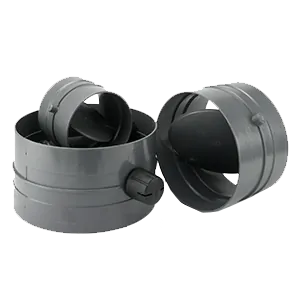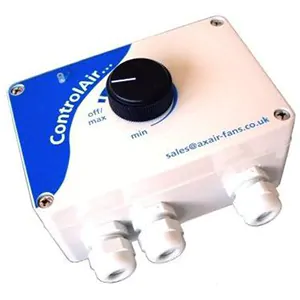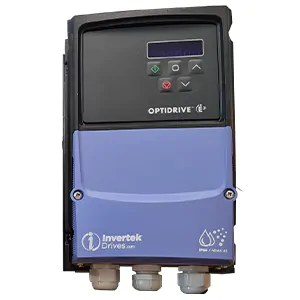Fan & Frequency Control
Voltage variation and frequency control to the speed and energy efficiency of industrial fans.
Energy Efficient Fan & Frequency Speed Control
System Damper
This low cost approach impedes air flow. The damper takes the form of a ‘butterfly valve’ that is actuated by turning a spindle, a ‘blast gate’ that works by means of a sliding panel, or an ‘iris’ damper.
In all cases, impeding the flow of air is both a pressure and energy loss within the ventilation system and a source of noise.


Voltage Variation
Simple voltage control can be applied to some fans more successfully than others.
In the case of a transformer, the resultant voltage output to the fan motor is sinusoidal and as ‘clean’ as the mains input. The motor does not then suffer from electro-magnetically-generated noise or additional self-heating due to waveform harmonics. The down-side is the cost, weight, and space required for a trasformer.
Where electronic voltage controllers are concerned, these rely on devices that switch the voltage waveform ‘on’ at a particular ‘conduction angle’ that is varied by the turning of a potentiometer. The advantage is low cost, low weight and low space.
External rotor motors have high resistance rotors, which are necessary to enable voltage control. Most will work with electronic voltage controllers because the extra heat is easily lost to the airstream. It is only in larger sizes of external rotor motor that transformer control can become necessary.
Standard (internal rotor) industrial motors are not designed for voltage control and, depending on the type of fan, are likely to overheat once the voltage drops out of the normal tolerance band e.g. a normal 230V means 216.2V to 253V in the UK. Three phase voltage control by transformer is extremely expensive because there is a transformer for each phase.


Frequency Control
This is normally accomplished with an inverter drive. This device electronically converts a fixed mains frequency sinusoidal input into a variable frequency and voltage output. Both must be varied in proportion to maintain motor flux density.
The vast majority of inverters have three phase outputs, but can be supplied for single or three phase input. This makes speed control possible using standard (internal rotor) motors and is available where there is only single phase supply.
Whilst some electrical systems and motors combine to be extremely troublesome, inverters are, on the whole, successfully applied and provide worthwhile benefits in terms of precise, multi-speed, continuously variable, and fully automatic fan control. The benefits are in energy saving, low noise, low maintenance, and low re-location costs, with over-current protection as a standard feature.

